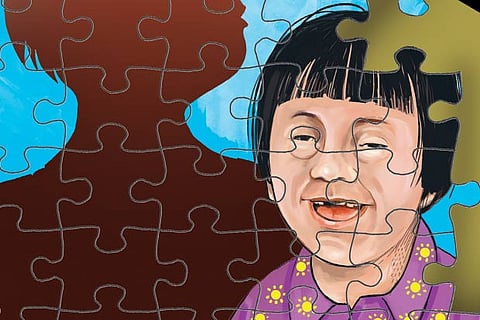

Washington
It pointed to stronger than expected associations between Down syndrome and acute myeloid leukemia (AML), one type of blood cancer.
Down syndrome is one of the most common genetic conditions in the US and Canada. According to the US Centers for Disease Control and Prevention, about 6,000 babies with Down syndrome are born in the United States each year. That is approximately one in every 700 babies born in the US and one in 750 newborns in Canada.
Children with Down syndrome have a substantially increased risk of multiple health conditions compared to the general population. They have a particularly elevated risk (estimated 150-fold) of developing AML before age of five.
The study confirmed that Down syndrome is a strong risk factor for childhood leukemia.
Study findings on leukemia in children with Down syndrome
The researchers examined medical data of more than 3.9 million children born 1996-2016 in seven US healthcare systems or in Ontario, Canada. The data included the children's health information from birth to cancer diagnosis, death, age of 15 years, disenrollment, or December 30, 2016.
"One main strength of this study is its large cohort with more leukemia cases in children with Down syndrome than most previous studies," said Emily Marlow, first author and a recent graduate from UC Davis Department of Public Health Sciences and Graduate Group in Epidemiology.
"This allowed more precise risk estimation, especially for rare leukemia types such as AML-7, previously estimated from small case reports," added Marlow.
The study estimated the incidence and hazard ratios of leukemia for children with Down syndrome and other children, adjusting for the health system, child's age at diagnosis, birth year and sex. It found that 2.8 percent of children with Down syndrome were diagnosed with leukemia, compared to 0.05 per cent of other children.
Compared to other children, kids with Down syndrome had a higher risk of AML before the age of five and a higher risk of acute lymphoid leukemia (ALL) regardless of age. In children with Down syndrome, ALL was more common between ages two-four years, while AML was more common in younger kids - the highest incidence during the first year of life. For other children, AML incidence remained very low through age 14 years, whereas ALL peaked at the age of three years and steadily declined until the age of eight years.
The study also found that males and Hispanic children were more likely to be diagnosed with Down syndrome and more likely to develop leukemia than their counterparts. White children have a higher incidence rate of ALL and more likely to have Down syndrome than Black children.
Catching leukemia in kids
The researchers urged parents with kids with Down syndrome to keep an eye for signs of leukemia. Common symptoms include fatigue or pale skin, infections and fever, easy bleeding or bruising, shortness of breath and coughing. Parents are advised to talk to the pediatrician if their children exhibit any of these symptoms.
"The good news is that childhood leukemia can be very treatable if caught early," said co-senior author Diana L. Miglioretti, professor and division chief of biostatistics at the UC Davis Department of Public Health Sciences and affiliate investigator with Kaiser Permanente Washington Health Research.
Imaging technologies and leukemia
A steep rise in medical imaging over the past two decades, particularly in computed tomography (CT) exams, increased children's exposure to higher levels of radiation. Previous studies have shown that CT scanning increases leukemia risk.
"Given the potential for ionizing radiation to increase leukemia risk in children with Down syndrome, other non-ionizing radiation modes of imaging, such as ultrasound and MRI, should be used as the first line image tests," said co-senior author Rebecca Smith-Bindman, a UCSF School of Medicine professor with the Departments of Radiology and Biomedical Imaging and of Epidemiology and Biostatistics.
Visit news.dtnext.in to explore our interactive epaper!
Download the DT Next app for more exciting features!
Click here for iOS
Click here for Android